FLORINE STETTHEIMER
May 5 – September 24, 2017 at Jewish Museum, New York
October 21, 2017 – January 28, 2018 at Art Gallery of Ontario, Toronto
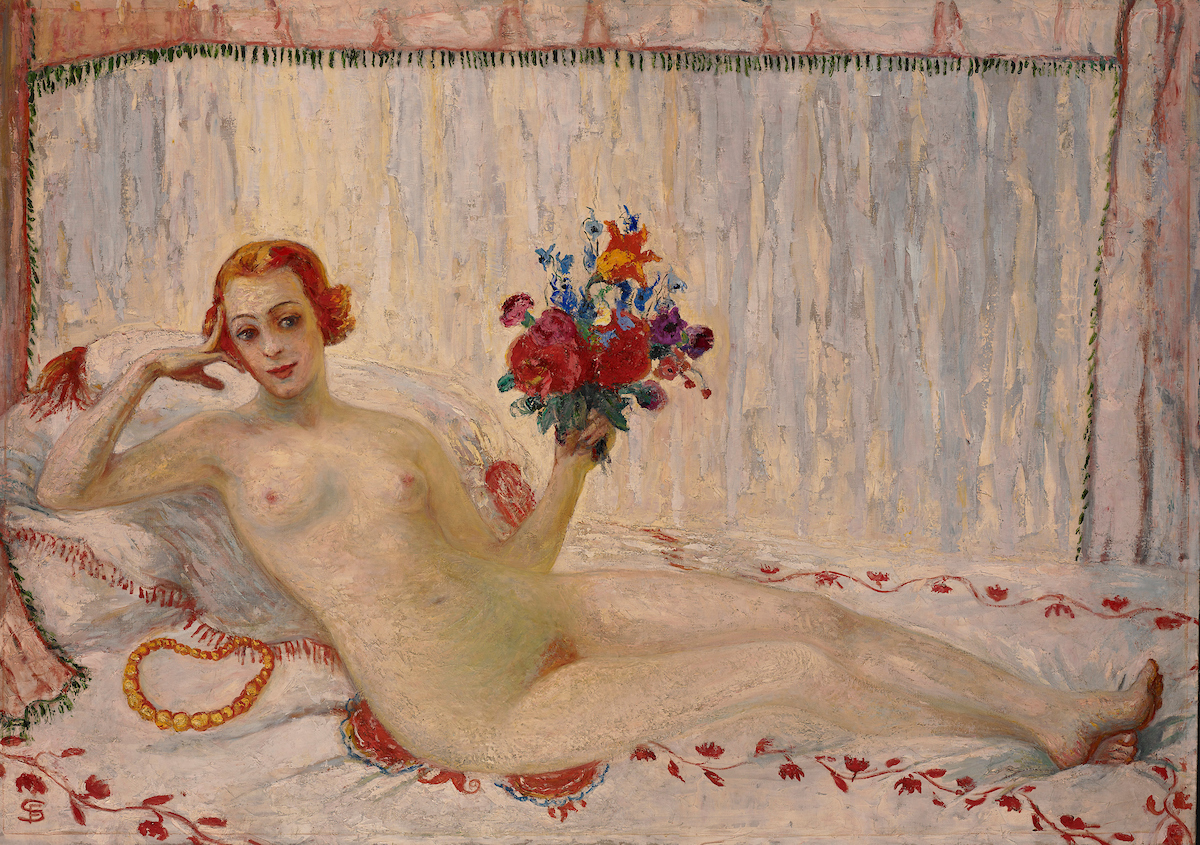 Florine Stettheimer, A Model (Nude Self-Portrait), 1915, oil on canvas, 48¼ x 68¼ in. (122.5 x 173.4 cm). Art Properties, Avery Architectural and Fine Arts Library, Columbia University in the City of New York, Gift of the Estate of Ettie Stettheimer, 1967
Florine Stettheimer, A Model (Nude Self-Portrait), 1915, oil on canvas, 48¼ x 68¼ in. (122.5 x 173.4 cm). Art Properties, Avery Architectural and Fine Arts Library, Columbia University in the City of New York, Gift of the Estate of Ettie Stettheimer, 1967
The exhibition showcases over 50 paintings and drawings in addition
to costume and theater designs, photographs, and ephemera
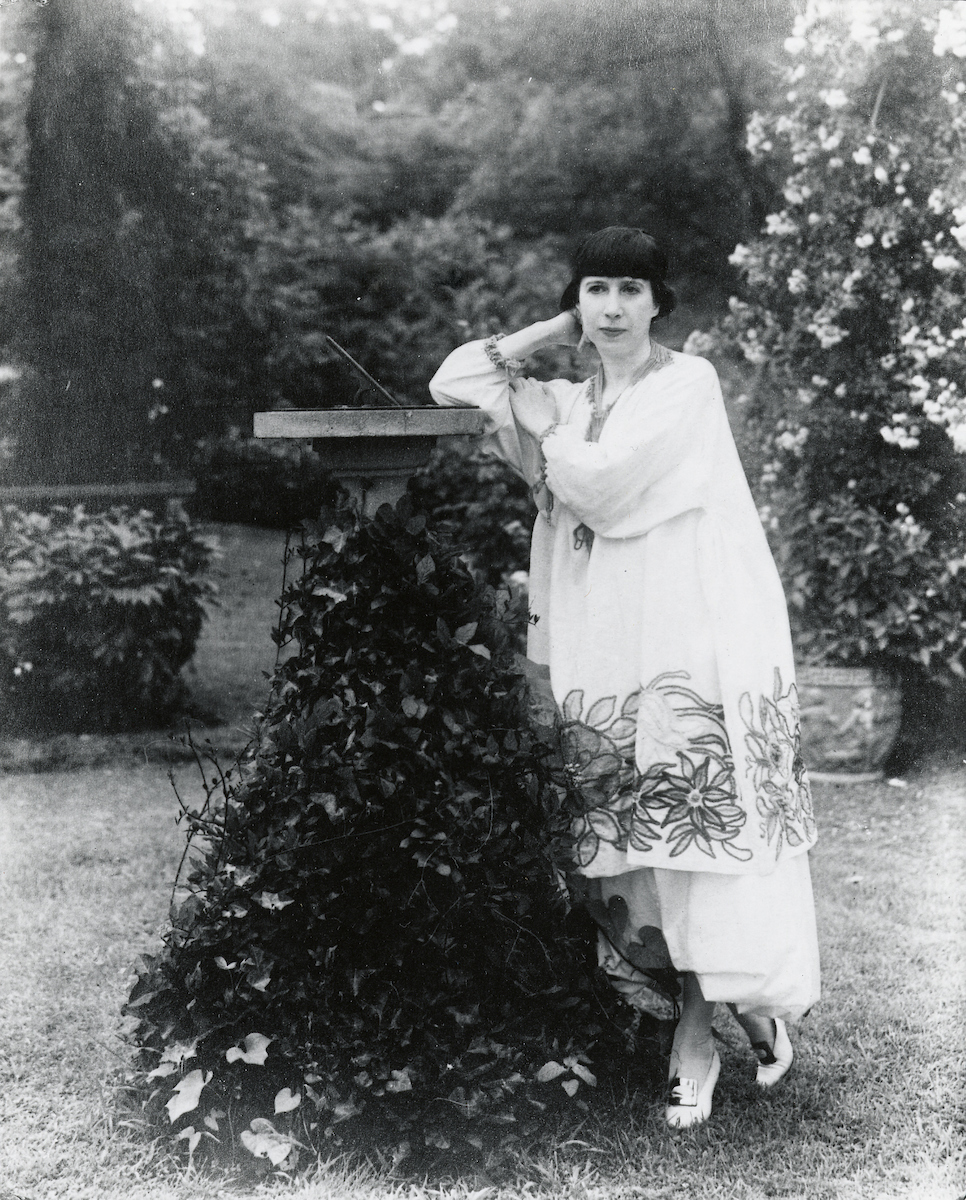
Born to a wealthy Jewish family, in Rochester, New York, Stettheimer studied at the Art Students League in New York City and then in Europe, where she encountered two profound influences: the Symbolist painters and poets, and the Ballets Russes. Stettheimer’s return to New York in 1914, as World War I began, was a turning point for the artist, who was then in her mid-40s.
Stephen Brown, Neubauer Family Foundation Associate Curator, The Jewish Museum, notes:
“Stettheimer has sometimes been typecast as a lightweight feminine artist with a whimsical bent,”
“This view is belied by her powerful thinking of portraiture and her astute adaptation of European vanguard ideas, most notably Symbolism, to uniquely American imagery.”
PHOTO: Florine Stettheimer, photograph by Peter A. Juley & Son, c. 1917-20. Image provided by Peter A. Juley & Son Collection, Photograph Archives, Smithsonian American Art Museum, Washington, DC
Works from all periods of the artist’s life
The works in Florine Stettheimer: Painting Poetry are drawn from all periods of the artist’s life, with Head of a Girl (1887-88), a pencil drawing Stettheimer made when she was just 16 years old, being one of the earliest works on view. Offers a timely reconsideration of this influential American artist with a sharp satirical wit, placing her centrally in the modern dialogue of high and mass culture.
1916
New York art debut
She made her New York art debut with a solo show at the prestigious Knoedler Gallery, but it proved disappointing, attracting lukewarm press and no sales. She and her sisters Carrie and Ettie, and their mother, Rosetta, then developed a stratagem for unveiling her new works, characteristic of the period: parties.
Their elite salon attracted many of the leading lights of the artistic vanguard, including her close friend Marcel Duchamp, as well as Alfred Stieglitz, Carl Van Vechten, Georgia O’Keeffe, Elie Nadelman, Gaston Lachaise, and many others. Flamboyant and epicurean, Stettheimer was an astute commentator on her social milieu.
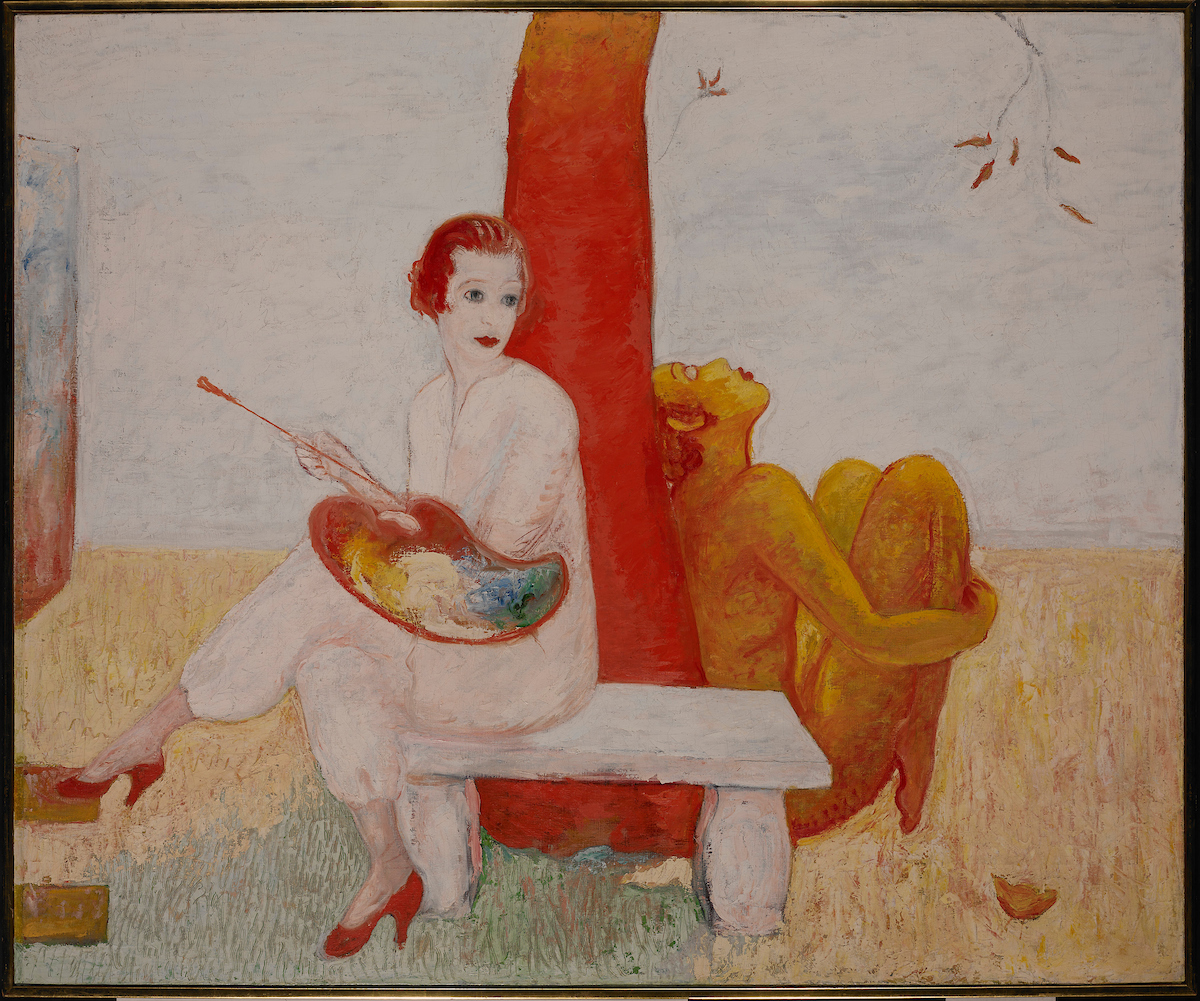 Florine Stettheimer, Self-Portrait with Palette (Painter and Faun), undated, oil on canvas, 60 x 71⅞ in. Art Properties, Avery Architectural and Fine Arts Library, Columbia University in the City of New York, Gift of the Estate of Ettie Stettheimer, 1967
Florine Stettheimer, Self-Portrait with Palette (Painter and Faun), undated, oil on canvas, 60 x 71⅞ in. Art Properties, Avery Architectural and Fine Arts Library, Columbia University in the City of New York, Gift of the Estate of Ettie Stettheimer, 1967
The exhibition presents Stettheimer’s work in the context of the social and intellectual environment of early twentieth-century New York, exploring the artist’s fascinating position as an American modernist whose work exuberantly reflects on the mass culture of her times. Over four decades of cultural development, from the Gilded Age to the Jazz Age, the exhibition examines Stettheimer’s unique artistic style, her position as a link between groups within the New York art world, and her continued influence on artistic practice today.
1918
Stettheimer articulated her unique style
Style typified in the painting Picnic at Bedford Hills (1918). The figures are painted in a miniaturized, self-consciously naïve manner that draws from folk art and Art Deco fashion illustration. Stettheimer’s family and friends, and herself, are the subjects of the painting: her sister Carrie and good friend Duchamp set out a picnic, and sculptor Elie Nadelman is sprawled out near her sister Ettie.
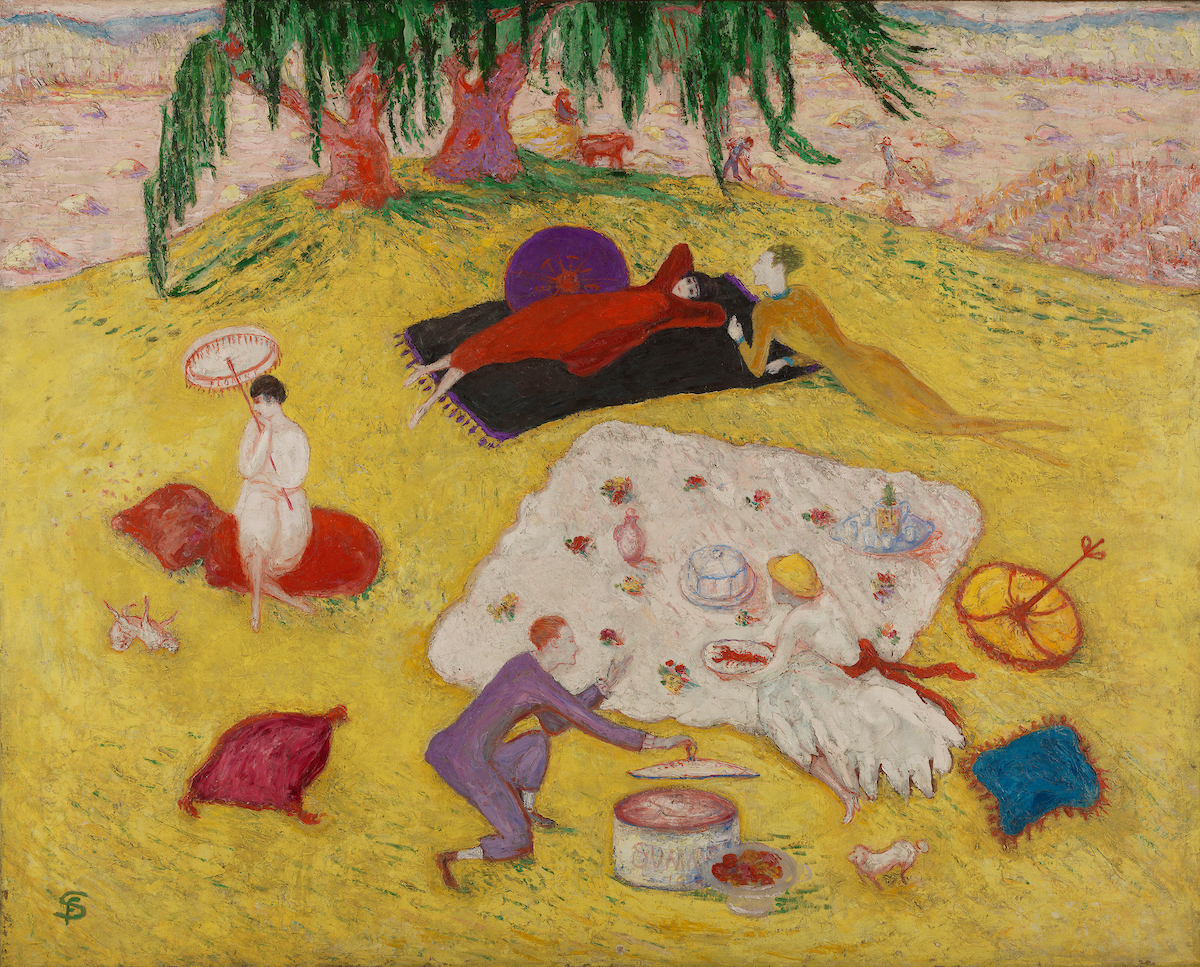
Florine Stettheimer, Picnic at Bedford Hills, 1918, oil on canvas, 40 5/16 x 50¼ in. Pennsylvania Academy of the Fine Arts, Philadelphia. Gift of Ettie Stettheimer, 1950.21
1919
 Florine Stettheimer, Heat, 1919, Oil on canvas, 50 x 36½ in. (127 x 92.7 cm) Brooklyn Museum, Gift of the Estate of Ettie Stettheimer, 1957
Florine Stettheimer, Heat, 1919, Oil on canvas, 50 x 36½ in. (127 x 92.7 cm) Brooklyn Museum, Gift of the Estate of Ettie Stettheimer, 1957
1920
Stettheimer’s satirical wit shines in Asbury Park South (1920). The painting features brilliant yellow tones and the lively movement of the black and white beachgoers intermingling on the New Jersey beach, when, in reality, Asbury Park was a segregated beach. Again, Stettheimer depicts members of her inner circle, including Duchamp and writer Carl Van Vechten. Stettheimer includes herself in the festivities, just right of center, under a green parasol.
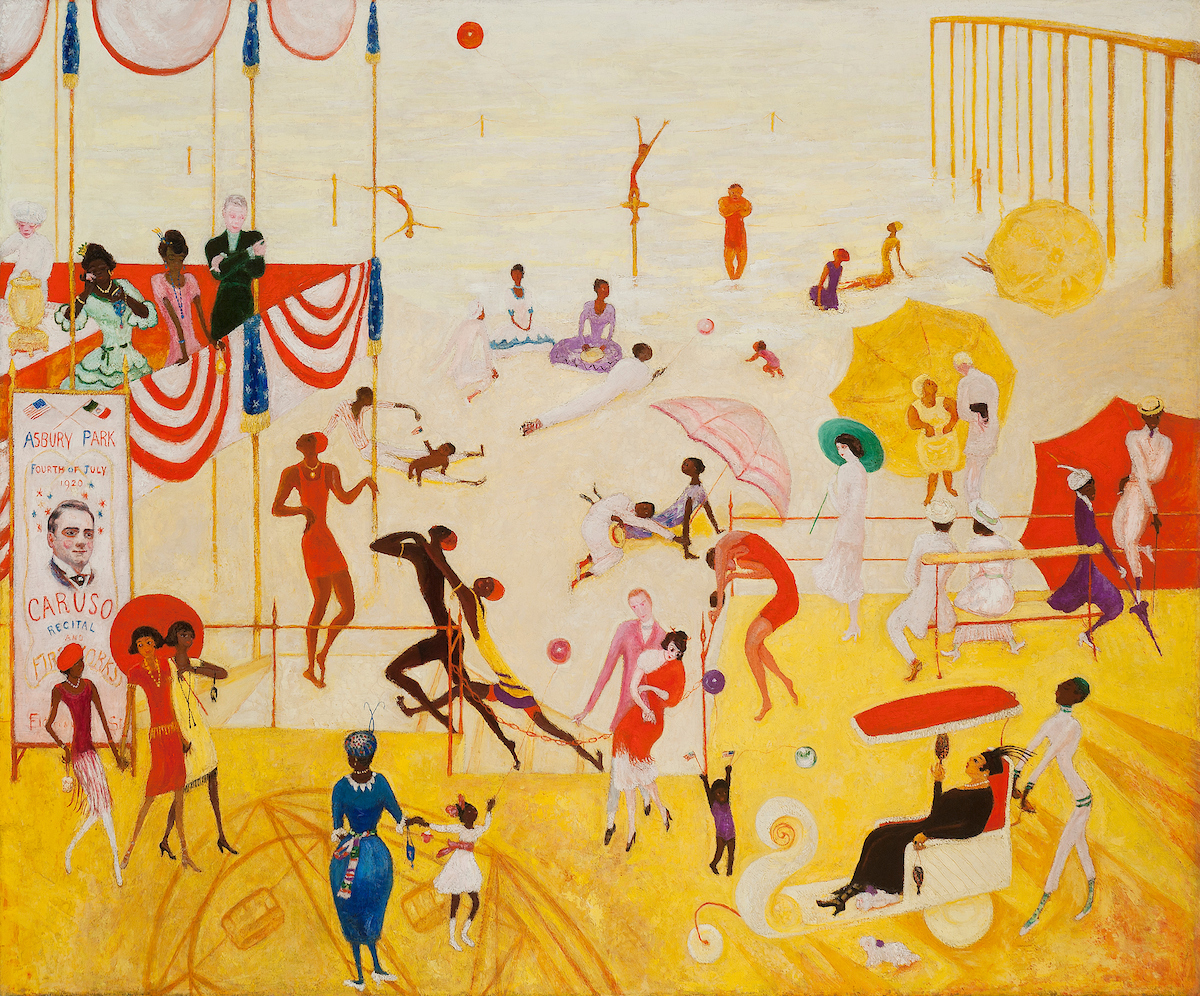 Florine Stettheimer, Asbury Park South, 1920, oil on canvas, 50 × 60 in. Collection of halley k harrisburg and Michael Rosenfeld, New York
Florine Stettheimer, Asbury Park South, 1920, oil on canvas, 50 × 60 in. Collection of halley k harrisburg and Michael Rosenfeld, New York
1923
 Florine Stettheimer, Portrait of My Sister, Ettie Stettheimer, 1923, oil on canvas, mounted on hardboard, 40 3/8 x 26¼ in. Art Properties, Avery Architectural and Fine Arts Library, Columbia University in the City of New York, Gift of the Estate of Ettie Stettheimer, 1967
Florine Stettheimer, Portrait of My Sister, Ettie Stettheimer, 1923, oil on canvas, mounted on hardboard, 40 3/8 x 26¼ in. Art Properties, Avery Architectural and Fine Arts Library, Columbia University in the City of New York, Gift of the Estate of Ettie Stettheimer, 1967
 Florine Stettheimer, Portrait of Myself, 1923, Oil on canvas laid on board, 40⅜ x 26⅜ in. Art Properties, Avery Architectural and Fine Arts Library, Columbia University in the City of New York, Gift of the Estate of Ettie Stettheimer, 1967. 1967.17.005
Florine Stettheimer, Portrait of Myself, 1923, Oil on canvas laid on board, 40⅜ x 26⅜ in. Art Properties, Avery Architectural and Fine Arts Library, Columbia University in the City of New York, Gift of the Estate of Ettie Stettheimer, 1967. 1967.17.005
 Florine Stettheimer, Portrait of Marcel Duchamp, 1923-1926, oil on canvas, 25¼ x 25¼ in. Michele and Donald D’Amour Museum of Fine Arts, Springfield, Massachusetts, Gift of the Estate of Ettie and Florine Stettheimer 55.22. Image provided by Michele and Donald D’Amour Museum of Fine Arts, Springfield, Massachusetts. Photograph by David Stansbury
Florine Stettheimer, Portrait of Marcel Duchamp, 1923-1926, oil on canvas, 25¼ x 25¼ in. Michele and Donald D’Amour Museum of Fine Arts, Springfield, Massachusetts, Gift of the Estate of Ettie and Florine Stettheimer 55.22. Image provided by Michele and Donald D’Amour Museum of Fine Arts, Springfield, Massachusetts. Photograph by David Stansbury
1924
 Florine Stettheimer, Beauty Contest: To the Memory of P.T. Barnum, 1924, oil on canvas, 50 x 60½ in. Wadsworth Atheneum Museum of Art, Hartford, Connecticut, Gift of Ettie Stettheimer, 1947.242
Florine Stettheimer, Beauty Contest: To the Memory of P.T. Barnum, 1924, oil on canvas, 50 x 60½ in. Wadsworth Atheneum Museum of Art, Hartford, Connecticut, Gift of Ettie Stettheimer, 1947.242
1932
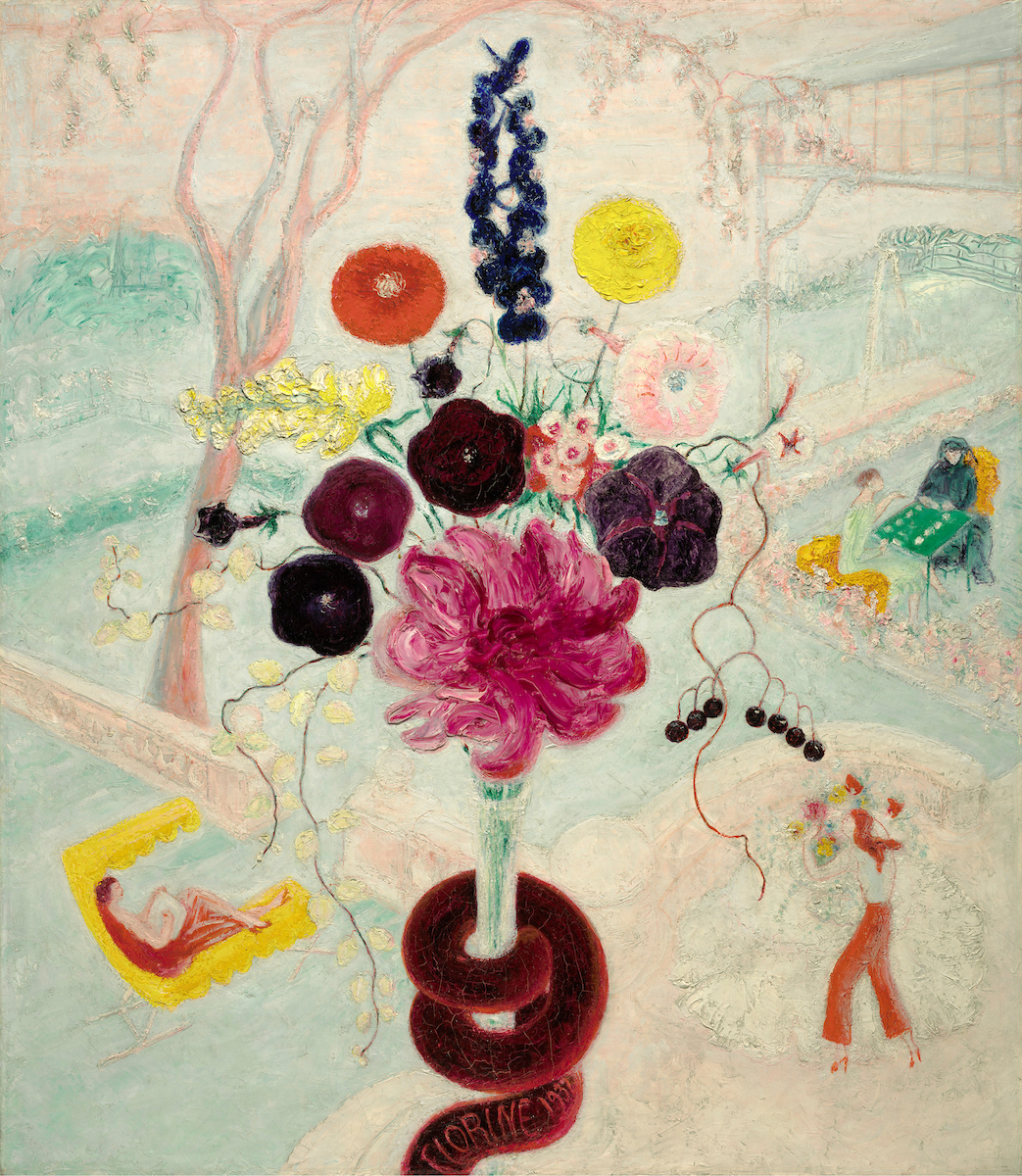 Florine Stettheimer, Birthday Bouquet (Flowers with Snake), 1932, oil on canvas, 30 x 26⅛ in. The Nelson-Atkins Museum of Art, Kansas City, Missouri, Gift of Mrs. R. Kirk Askew Jr. in memory of R. Kirk Askew Jr. F79-65
Florine Stettheimer, Birthday Bouquet (Flowers with Snake), 1932, oil on canvas, 30 x 26⅛ in. The Nelson-Atkins Museum of Art, Kansas City, Missouri, Gift of Mrs. R. Kirk Askew Jr. in memory of R. Kirk Askew Jr. F79-65
1933
Stettheimer created Family Portrait II. This iconic painting gathers many of the themes that preoccupied her throughout her career-her family, New York, and the theater. It also features some of her most distinctive artistic techniques: the use of strong colors, the mixture of a realistic setting with dramatic, even surrealistic elements; and an ornamental frame that calls attention to the artwork as an object.
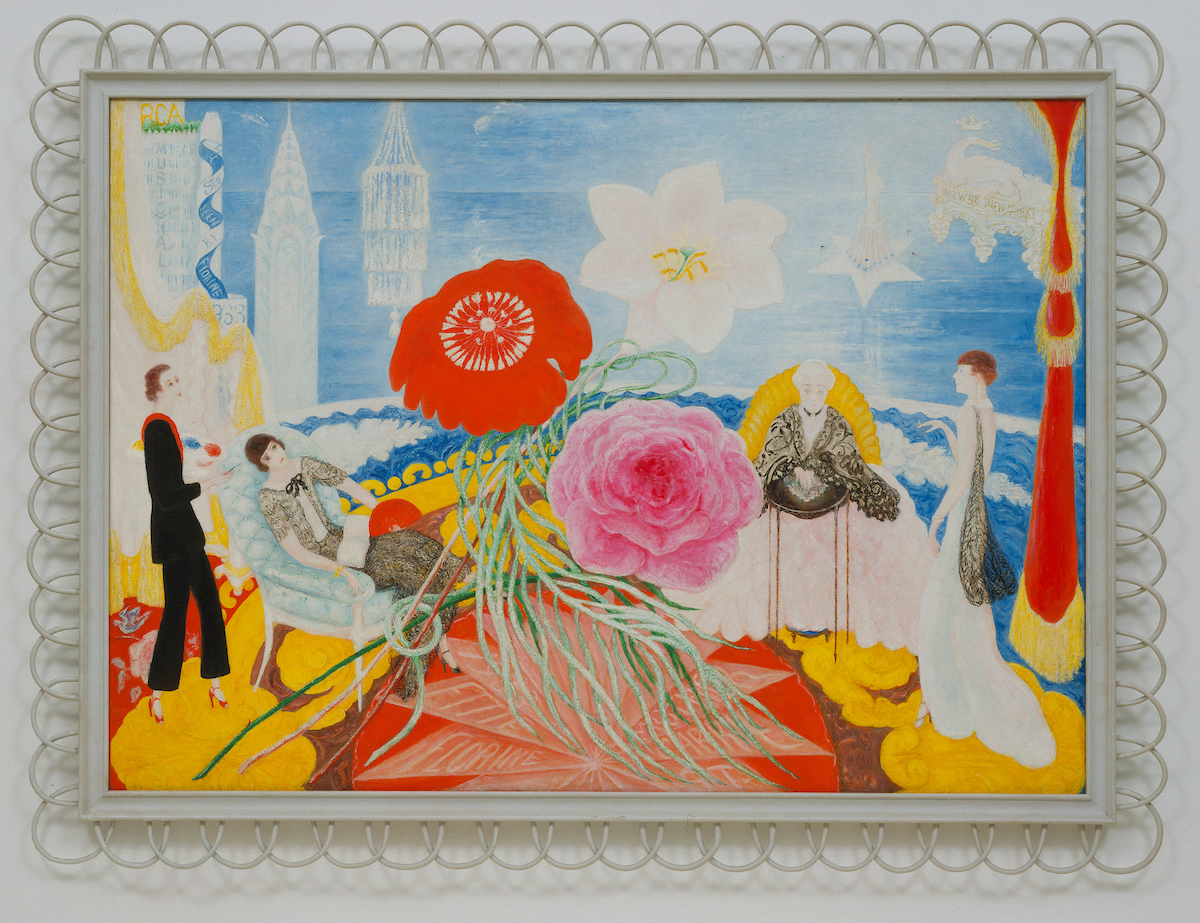 Florine Stettheimer, Family Portrait II, 1933, Oil on canvas 46¼ x 64⅝ in. Museum of Modern Art, New York, Gift of Miss Ettie Stettheimer, 1956. 8.1956
Florine Stettheimer, Family Portrait II, 1933, Oil on canvas 46¼ x 64⅝ in. Museum of Modern Art, New York, Gift of Miss Ettie Stettheimer, 1956. 8.1956
Stettheimer: costume and set designer and poet
In addition to her work as a painter, Stettheimer was active as a costume and set designer, as well as a poet. In these endeavors, she invested words, materials, colors, and scenes with mystery and symbolic value.
During the summer of 1912, while Stettheimer was living in Paris, she attended a performance of Claude Debussy’s ballet, The Afternoon of a Faun, a production by the Ballets Russes. Stettheimer, then 40 years old, was inspired to produce a ballet of her own. From the fall of 1912, through 1916, she conceived libretti and drew, painted, and fabricated designs for the costuming of her original production, Orpheus of the Four Arts. The exhibition includes many of Stettheimer’s sketches, maquettes, and sculptures of the designs from the unrealized ballet.
 Florine Stettheimer, “Georgette,” costume design for Orphée of the Quat-z-Arts, c. 1912, gouache and lace on paper on wood, 18 x 12⅞ in. The Museum of Modern Art, New York, Gift of Miss Ettie Stettheimer, Image provided by The Museum of Modern Art / Licensed by SCALA / Art Resource, New York
Florine Stettheimer, “Georgette,” costume design for Orphée of the Quat-z-Arts, c. 1912, gouache and lace on paper on wood, 18 x 12⅞ in. The Museum of Modern Art, New York, Gift of Miss Ettie Stettheimer, Image provided by The Museum of Modern Art / Licensed by SCALA / Art Resource, New York
 Florine Stettheimer, Nijinsky, costume design for Orphée of the Quat-z-Arts, c. 1912, gouache and metallic paint on paper, 15⅛ x 9⅛ in. The Museum of Modern Art, New York, Gift of Miss Ettie Stettheimer. Image provided by The Museum of Modern Art / Licensed by SCALA / Art Resource, New York
Florine Stettheimer, Nijinsky, costume design for Orphée of the Quat-z-Arts, c. 1912, gouache and metallic paint on paper, 15⅛ x 9⅛ in. The Museum of Modern Art, New York, Gift of Miss Ettie Stettheimer. Image provided by The Museum of Modern Art / Licensed by SCALA / Art Resource, New York 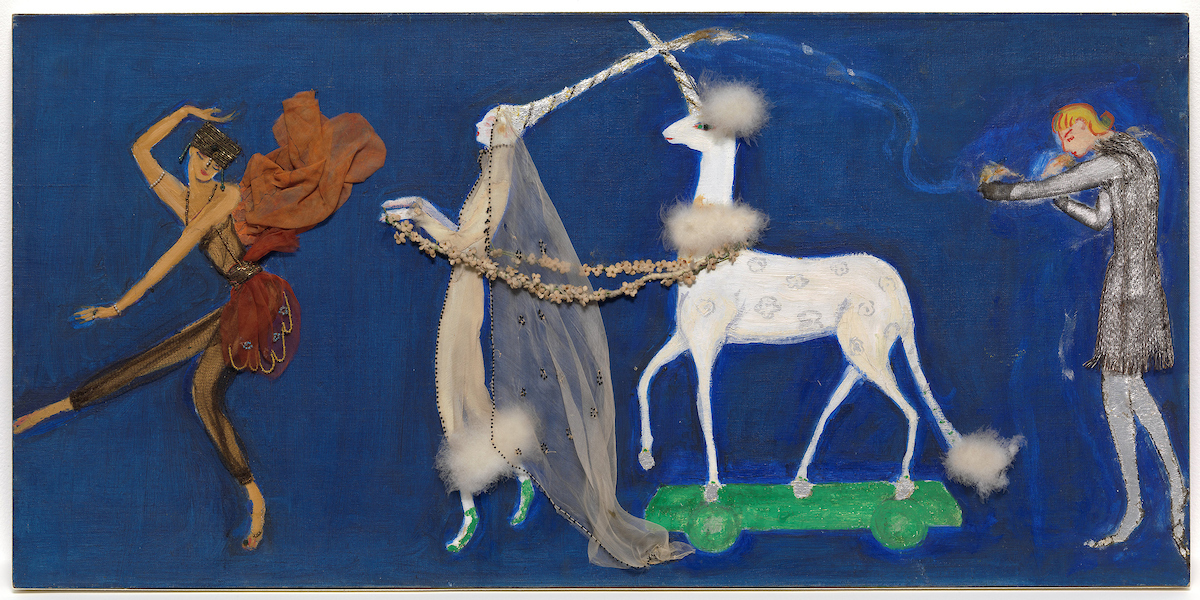 “Procession: Orpheus…”. Orphée of the Quat-z-arts, 1912, oil, fabric, and beads on canvas. Museum of Modern Art, New York, Gift of Miss Ettie Stettheimer. 83.1947.6,Image provided by The Museum of Modern Art / SCALA / Art Resource, New York.
“Procession: Orpheus…”. Orphée of the Quat-z-arts, 1912, oil, fabric, and beads on canvas. Museum of Modern Art, New York, Gift of Miss Ettie Stettheimer. 83.1947.6,Image provided by The Museum of Modern Art / SCALA / Art Resource, New York.
Stettheimer’s poems were known only to a few friends during her life. Curious, funny, celebratory, always acute, the poetry comments on a range of topics-likes and dislikes, nature, food, people, moods-casting unexpected light on the artist and her milieu. Seven of her poems are featured on the gallery walls.
Stettheimer on Broadway
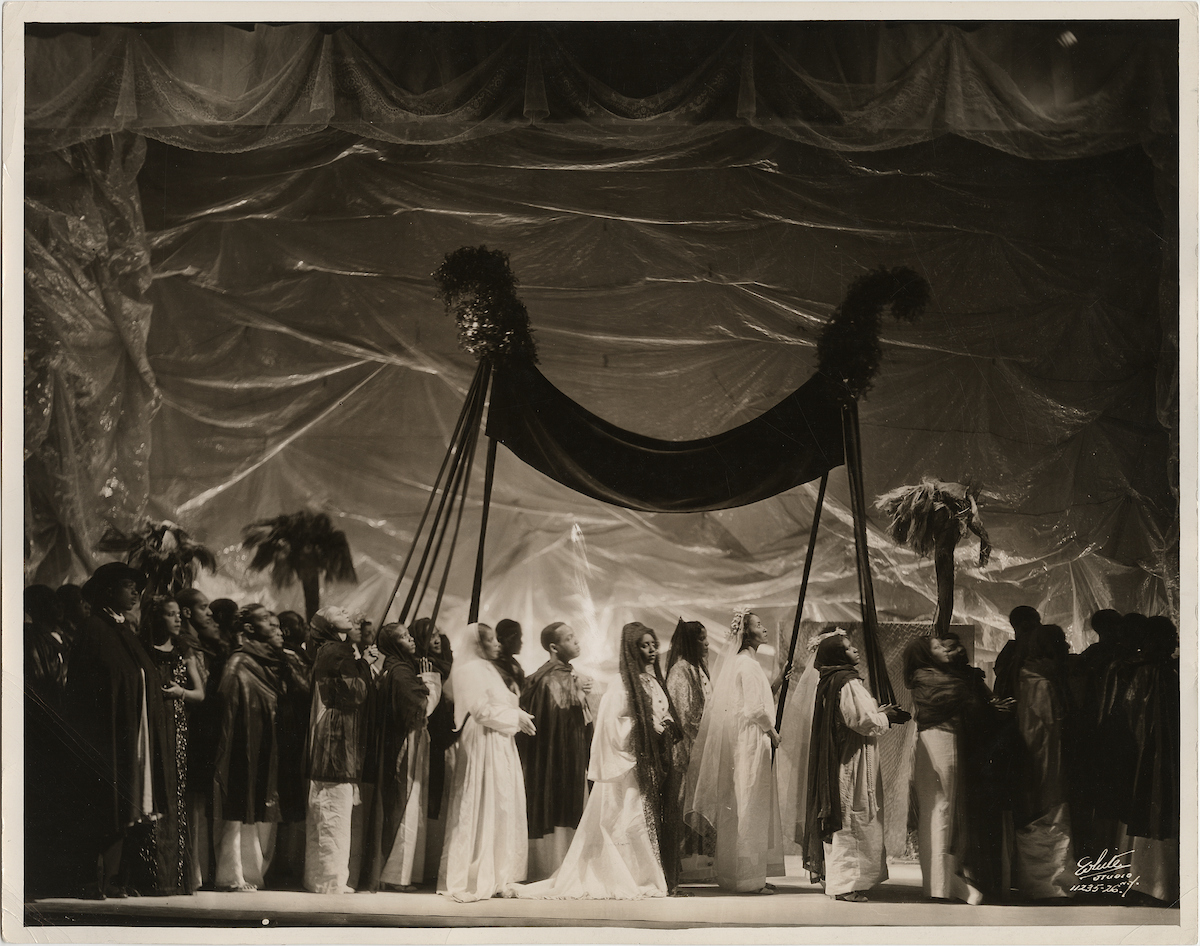 Four Saints in Three Acts, performance photograph by White Studio, New York, 1934. Florine and Ettie Stettheimer Papers, Yale Collection of American Literature, Beinecke Rare Book and Manuscript Library, Yale University, New Haven
Four Saints in Three Acts, performance photograph by White Studio, New York, 1934. Florine and Ettie Stettheimer Papers, Yale Collection of American Literature, Beinecke Rare Book and Manuscript Library, Yale University, New Haven
Also on view are more than a dozen costume and set designs by Stettheimer for the ground-breaking opera by Virgil Thomson (music) and Gertrude Stein (libretto), Four Saints in Three Acts (1934), which featured an all African American cast. Rather than drawing sketches, Stettheimer conceived of the designs for the opera in three dimensions, using handmade figurines and miniature stages.
High and mass cultures were joined in many ways; the production was staged on Broadway, rather than in an opera house, and Stettheimer utilized many unusual materials for her designs-cellophane, vaudevillian feathers and sequins, and coral. Photos of the original cast by Carl Van Vechten, as well as rare footage shot by prominent vanguard art dealer Julien Levy of the opera’s 1934 dress rehearsal, are included in the exhibition.
Exhibition Design
 LEFT: Florine Stettheimer’s bedroom at Alwyn Court, with her self-portrait visible at left, photograph by Peter A. Juley & Son, after 1926. Image provided by Peter A. Juley & Son Collection, Photograph Archives, Smithsonian American Art Museum, Washington, DC.RIGHT: Florine Stettheimer’s studio at the Beaux-Arts Building, New York, photograph by Peter A. Juley & Son, 1944. Image provided by Peter A. Juley & Son Collection, Photograph Archives, Smithsonian American Art Museum, Washington, DC
LEFT: Florine Stettheimer’s bedroom at Alwyn Court, with her self-portrait visible at left, photograph by Peter A. Juley & Son, after 1926. Image provided by Peter A. Juley & Son Collection, Photograph Archives, Smithsonian American Art Museum, Washington, DC.RIGHT: Florine Stettheimer’s studio at the Beaux-Arts Building, New York, photograph by Peter A. Juley & Son, 1944. Image provided by Peter A. Juley & Son Collection, Photograph Archives, Smithsonian American Art Museum, Washington, DC
Florine Stettheimer: Painting Poetry at the Jewish Museum is designed by Galia Solomonoff and Alejandro Stein of SAS/Solomonoff Architecture Studio.The designers took inspiration from photos of the Alwyn Court apartment (180 West 58th Street) where Stettheimer lived with her sisters and mother, and the artist’s studio in Bryant Park (80 West 40th Street), which she occupied by herself after her mother’s passing. Scenes from both of these residences show the tremendous care and attention that Stettheimer gave to designing and curating the different spaces of her home via the use of particular objects, custom furniture, shimmering and reflective materials, as well as her own paintings in self-made frames.
Catalogue
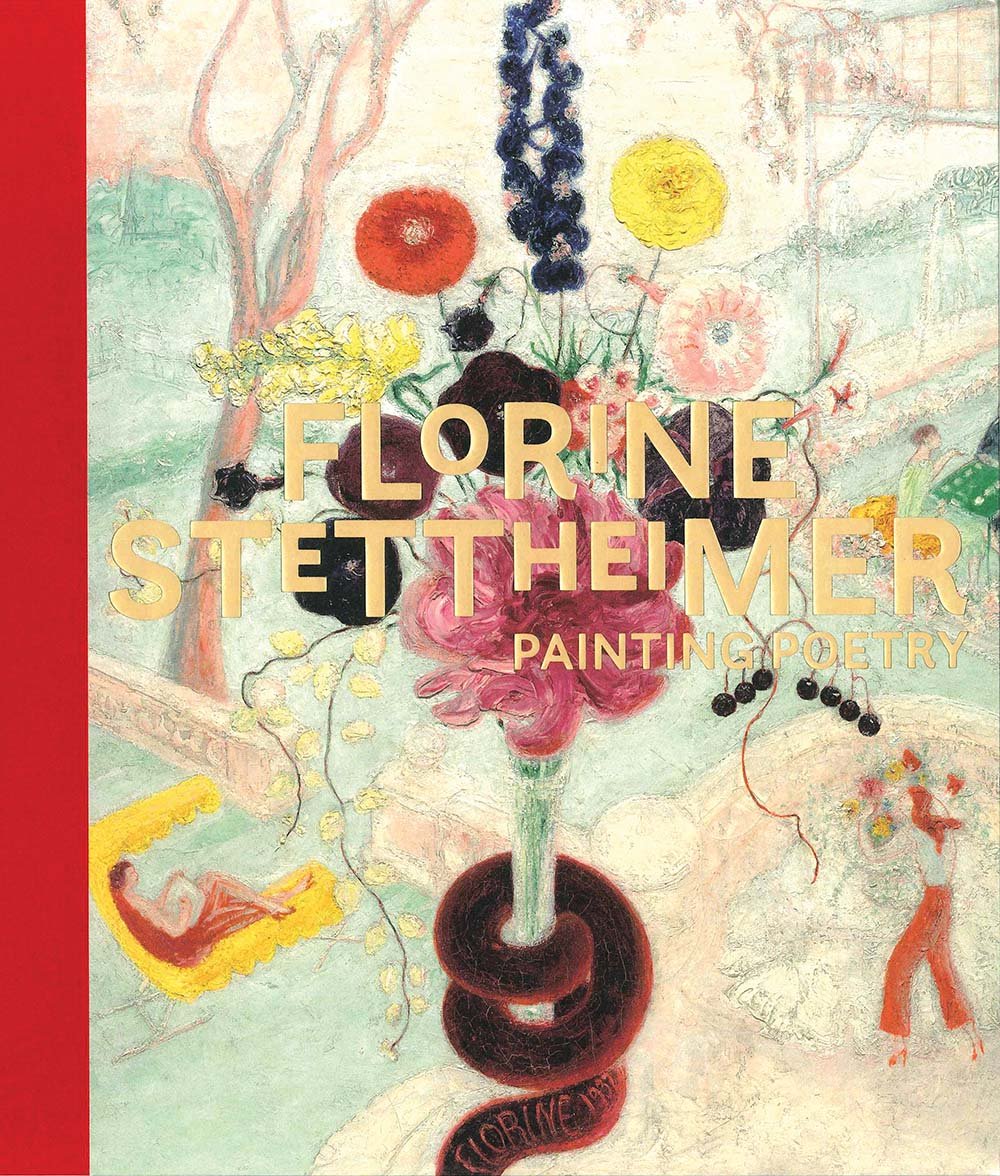
Authors: Stephen Brown and Georgiana Uhlyarik.
168-pages
150 color images
Edited by: the Jewish Museum, the Art Gallery of Ontario, and Yale University Press
Hard cover book
It includes many of the artist’s extant paintings, as well as drawings, theater designs, and ephemera.
It also highlights Stettheimer’s poetry and gives her a long overdue critical reassessment. The essays-as well as a roundtable discussion by seven leading contemporary female artists-overturn the traditional perception of Stettheimer as an artist of novelties.
Her work is linked not only to American modernism and the New York bohemian scene before World War II but also to a range of art practices active today.
Available worldwide and at the Jewish Museum’s Cooper Shop for $45.00
Support
Florine Stettheimer: Painting Poetry is made possible through support from the Terra Foundation for American Art, the Weissman Family, the National Endowment for the Arts, and the Estate of Stella Gordon Meierfeld. Additional support is provided by The Skirball Fund for American Jewish Life Exhibitions, the Neubauer Family Foundation, the Joan Rosenbaum Exhibition Fund, and Ealan and Melinda Wingate.
About the Jewish Museum
Fifth Avenue at 92nd Street, New York City Phone: 212.423.3200
www.TheJewishMuseum.org
Opening hours: Saturday, Sunday, Monday, and Tuesday, 11am to 5:45pm
Thursday, 11am to 8pm – Friday, 11am to 4pm.
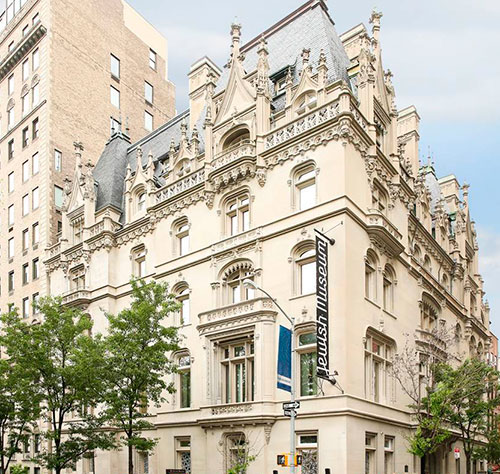 Located on Museum Mile at Fifth Avenue, the Jewish Museum is one of the world’s preeminent institutions devoted to exploring art and Jewish culture from ancient to contemporary, offering intellectually engaging, educational, and provocative exhibitions and programs for people of all ages and backgrounds.
Located on Museum Mile at Fifth Avenue, the Jewish Museum is one of the world’s preeminent institutions devoted to exploring art and Jewish culture from ancient to contemporary, offering intellectually engaging, educational, and provocative exhibitions and programs for people of all ages and backgrounds.
The Museum was established in 1904, when Judge Mayer Sulzberger donated 26 ceremonial objects to The Jewish Theological Seminary as the core of a museum collection. Today, the Museum maintains a collection of over 30,000 works of art, artifacts, and broadcast media reflecting global Jewish identity, and presents a diverse schedule of internationally acclaimed temporary exhibitions.
Visitors can now also enjoy Russ & Daughters at the Jewish Museum, a kosher sit-down restaurant and take-out appetizing counter on the Museum’s lower level.